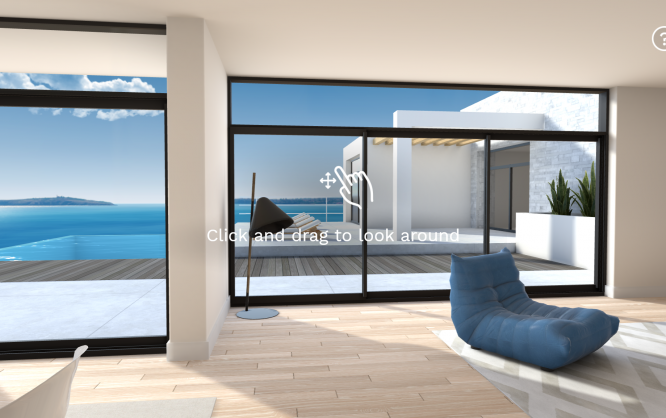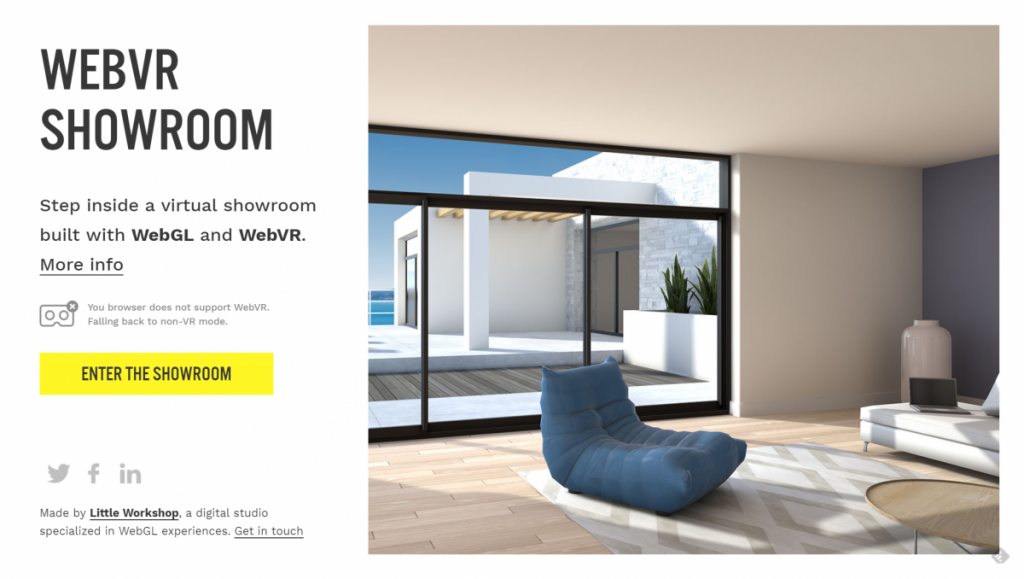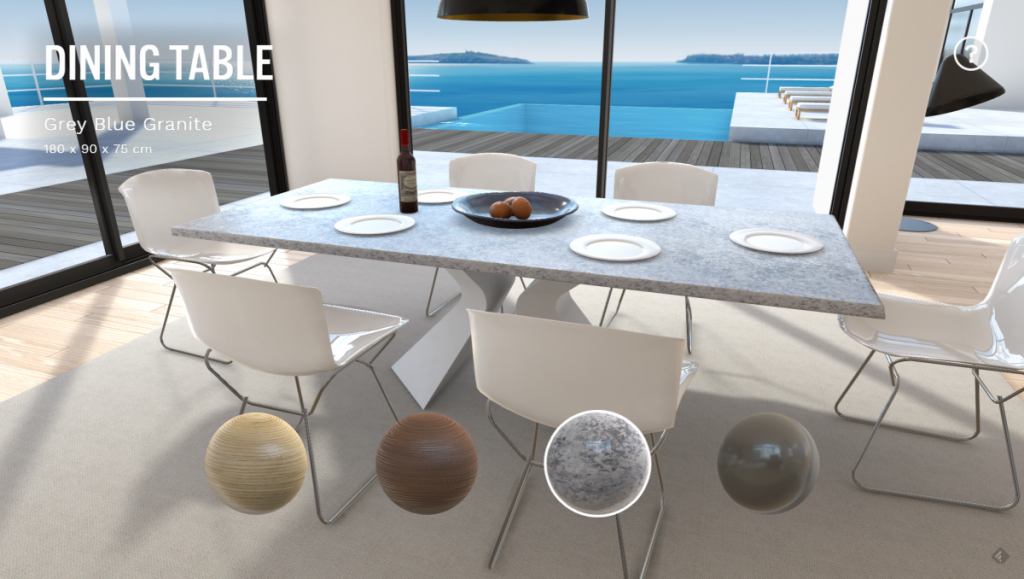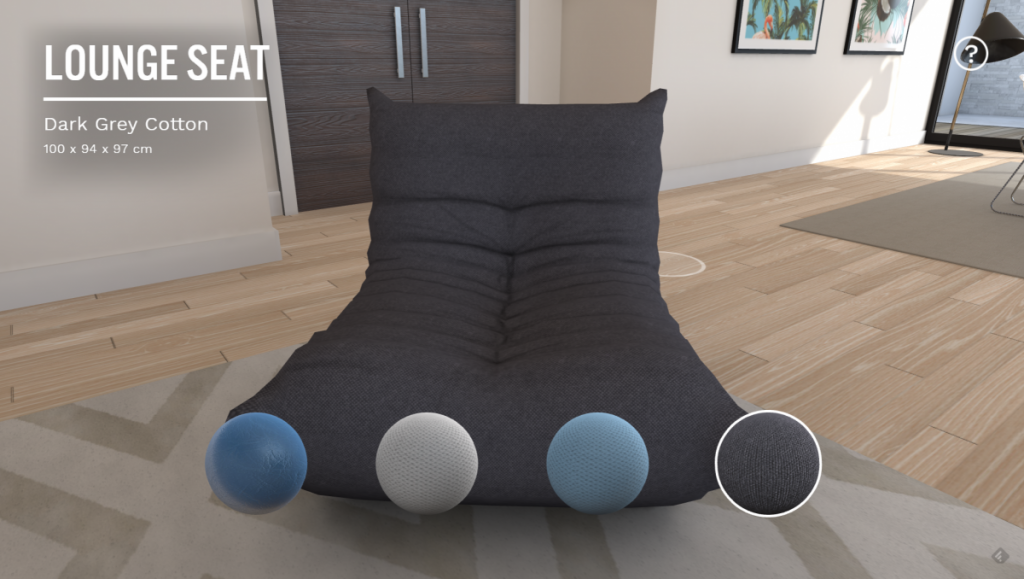WebVR Showroom: A Look Into the Future of Product Presentation

The WebVR showroom hints at what the future of product presentation on the web looks like impressively. When this establishes itself is mainly a question of costs.
Well, I'm impressed. So far, WebVR experiments were not really able to get me excited. But the things shown by the French studio Little Workshop are incredibly cool.
 If you don't have any 3D gear available, visit the showroom using the conventional browser. Here, WebGL comes into play. The mouse allows you to move through the room pretty freely.
If you don't have any 3D gear available, visit the showroom using the conventional browser. Here, WebGL comes into play. The mouse allows you to move through the room pretty freely.
 This is what the future of furniture shopping could look like. Now, if this were able to import your own four walls, this way of shopping would actually provide a significant added value compared to a brick-and-mortar furniture shop. Because in the virtual world, there wouldn't be a need for the common abstraction between the appearance in a giant furniture retailer and the small work room.
This is what the future of furniture shopping could look like. Now, if this were able to import your own four walls, this way of shopping would actually provide a significant added value compared to a brick-and-mortar furniture shop. Because in the virtual world, there wouldn't be a need for the common abstraction between the appearance in a giant furniture retailer and the small work room.

A Quick Virtual Trip to the Sea
The best way to visit their WebVR showroom is to slide your smartphone into cardboard, or something more professional, and enjoy the view. You'll like the living and dining area of the charming house with a sea view. For one, because of the topic itself, but also because of the incredibly realistic presentation. If you don't have any 3D gear available, visit the showroom using the conventional browser. Here, WebGL comes into play. The mouse allows you to move through the room pretty freely.
If you don't have any 3D gear available, visit the showroom using the conventional browser. Here, WebGL comes into play. The mouse allows you to move through the room pretty freely.
Different Realistic Textures to Edit
In some places, you'll realize that objects are surrounded by a white frame once you touch them with the mouse. Go ahead and click them. The viewport will immediately focus the selected object, and display information on it. Additionally, you'll also get the option to edit the look of the selected object by choosing a different texture. This is what the future of furniture shopping could look like. Now, if this were able to import your own four walls, this way of shopping would actually provide a significant added value compared to a brick-and-mortar furniture shop. Because in the virtual world, there wouldn't be a need for the common abstraction between the appearance in a giant furniture retailer and the small work room.
This is what the future of furniture shopping could look like. Now, if this were able to import your own four walls, this way of shopping would actually provide a significant added value compared to a brick-and-mortar furniture shop. Because in the virtual world, there wouldn't be a need for the common abstraction between the appearance in a giant furniture retailer and the small work room.


For me the massive downside of WebVR at the moment is the terrible quality in the images that you get. If you look at the same video/vr experience but in a 16×9 window on your retina screen it looks amazing, but as soon as you put on a set of Google Cardboard and use your phone (and lets face it that’s as good an experience 75% of people are going to have) then the quality drops.
It’s great for creating empathy with a user in a certain situation, but to actually look at the quality of something I think it’ll do more harm than good for now. Of course, I wouldn’t let that stop you from getting into this now, it doesn’t take all that much effort to put these things together and while it’s a bit grainy now, 6-12 months who knows how it will look.